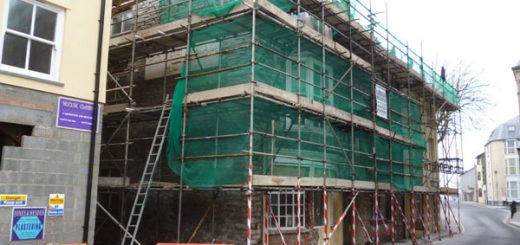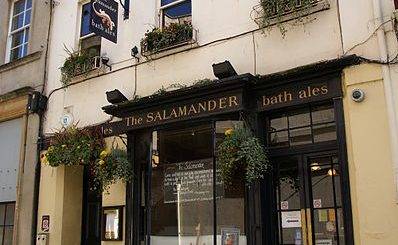The Hummums, Covent Garden
The following account was published in ‘The Haunted Homes and Family Traditions of Great Britain’ by John Ingram (1897). ‘In the thirteenth chapter of Boswell’s Life of Johnson, will be found a sigular account of an apparition which appeared in Covent Garden, at a place called the “Old Hummums.” The story is slight, but it is famous; and should, therefore, find a place in this collection. Some description of the place where the apparition appeared is necessary, in order to comprehend the full force of the impression which the account of its being seen there made upon the public mind.
In the south-east corner of Covent Garden market-place were quite recently two hotels known by the strange names of the “Old Hummums” and the “New Hummums.” The name is said to be a corruption of the Turkish name “Hamam,” a bath. These buildings were originally devoted to the use of what is now known as “the Turkish Bath” an institution introduced into England many years ago, the so-called “Turkish Bath” of the present day being only a revival of what was once very fashionable, but which, for a long time, had grown obsolete and been forgotten. These Hummums, however, when first established in London, seem to have been mostly frequented by characters of ill reputation, and became, as in the East, a favourite rendezvous for gossip. They speedily grew to be useful for the purposes of intrigue, and this circumstance gradually led to their suppression as baths. Both the Old Hummums and the New Hummums were changed into respectable hotels, which character they have retained until their recent demolition, the original signification of their former titles being almost forgotten.
The “Old Hummums” was the scene of what the great Dr. Johnson pronounced “the best accredited ghost story that he had ever heard” The individual whose apparition was said to have appeared there was a Mr. Ford, a relation or connection of the learned doctor himself, and is said to have been the riotous parson of Hogarth’s “Midnight Modern Conversation.” Boswell, relating a conversation which took place at Mr. Thrale’s house, at Streatham, between himself and Dr. Johnson, says:
“Amongst the numerous prints pasted on the walls of the dining-room of Streatham was Hogarth’s ‘Modern Midnight Conversation.’ I asked him what he knew of Parson Ford, who makes a conspicuous figure in the riotous group. Johnson said: ‘Sir, he was my acquaintance and relation; my mother’s nephew. He had purchased a living in the country, but not simoniacally. I never saw him but in the country. I have been told he was a man of great parts; very profligate, but I never heard he was impious’ Boswell asked, ‘Was there not a story of his ghost having appeared?’ Johnson said, ‘Sir, it was believed. A waiter at the Hummums, in which house Ford died, had been absent for some time, and returned, not knowing that Ford was dead. Going down to the cellar, according to the story, he met him ; going down again, he met him a second time. When he came up, he asked some of the people of the house what Ford could be doing there. They told him Ford was dead. The waiter took a fever, in which he lay for some time. When he recovered he said he had a message to deliver to some women from Ford; but he was not to tell what, or to whom. He walked out; he was followed, but somewhere about St.Paul’s they lost him. He came back, and said he had delivered the message, and the women exclaimed, “Then we are all undone!” Dr. Pellet, who was not a credulous man, inquired into the truth of this story, and he said the evidence was irresistible. My wife went to the Hummums (it is a place where people get themselves cupped). I believe she went with the intention to hear about this story of Ford. At first they were unwilling to tell her; but after they had talked to her she came away satisfied that it was true. To be sure the man had a fever, and this vision may have been the beginning of it. But if the message to the women, and their behaviour upon it, were true as related, there was something supernatural. That rests upon his word, and there it remains.’




Re: The Hummums, Covent Garden
Parson Ford’s ghost story in Boswell’s Life of Samuel Johnson and Hogarth’s “A Midnight Modern Conversation,” two major texts of the 18th century that thrived in Victorian London, establish the literary lore behind the Hummums. In Life of Samuel Johnson, Boswell notices Parson Ford’s presence in Hogarth’s print hanging on the wall and then prompts Johnson to tell the story of his cousin’s ghost. Johnson recounts the then seemingly famous tale of Ford, who died in his bedchamber at the Hummums and thereafter haunted the establishment. Boswell remarks that Ford “makes a conspicuous figure” in Hogarth’s “A Midnight Modern Conversation,” which was printed one year after Ford’s death. These texts seem unrelated to contemporary readers, but they were virtually inseparable to the Victorian London literati. For example, Sala jointly employs Ford’s tale and Hogarth’s print to establish the literary history behind the Hummums. These two texts held such intimacy that Sala reasons “A Midnight Modern Conversation” actually takes place in one of the hotel’s chambers
Cory MacLauchlin, ‘The Hummums: Bath, Brothel and Holy Shrine of Literary London’. Literary London: Interdisciplinary Studies in the Representation of London, Volume 6 Number 1 (March 2008). Online at http://www.literarylondon.org/london-journal/march2008/maclauchlin.html. Accessed on 22/10/2014.